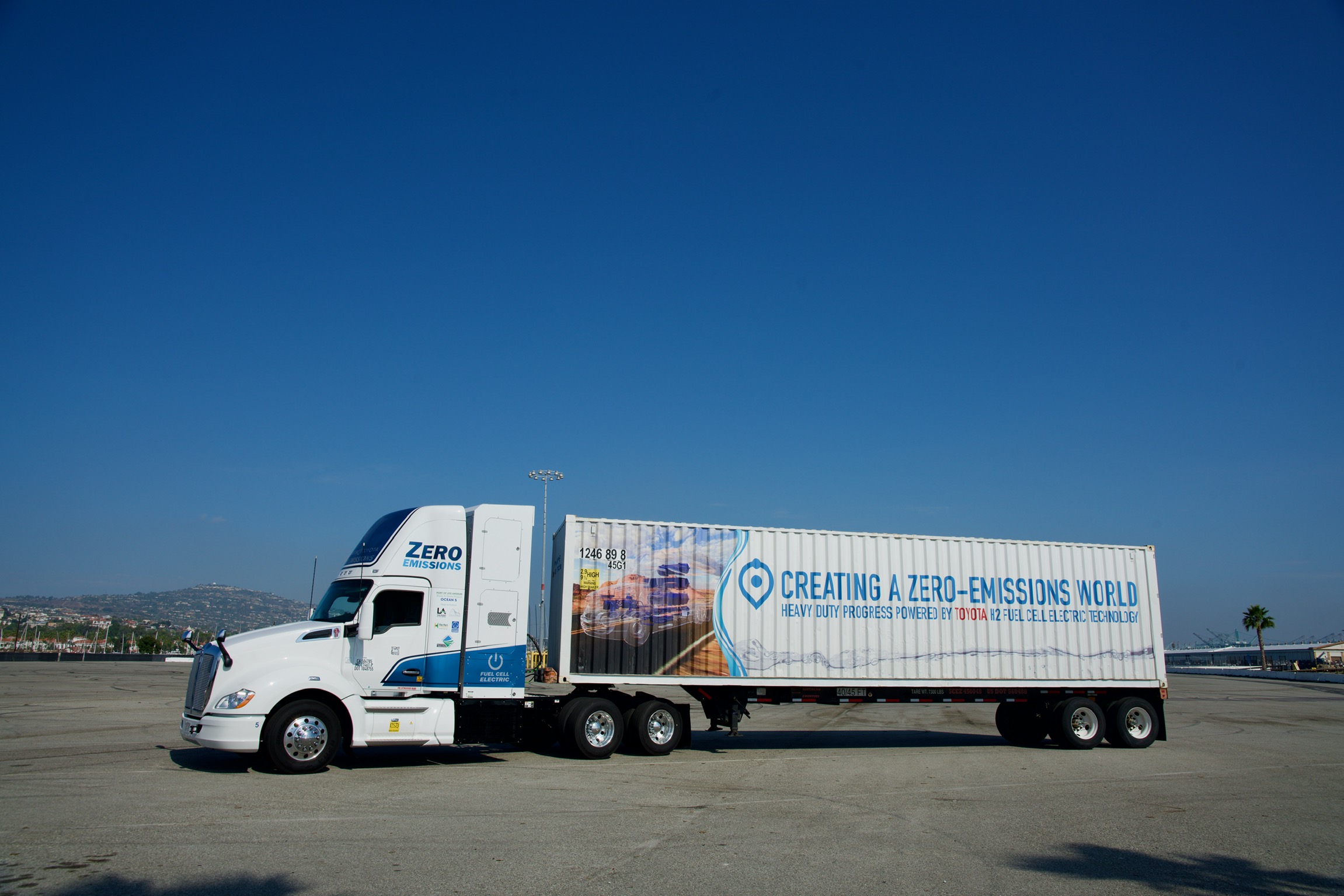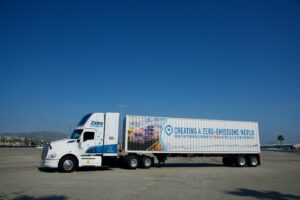There’s an electric-truck wave headed for California. Although relatively slow in coming, make no mistake: the sweep will be thorough.
“‘California continues to lead by example with first-of-its-kind standards to slash air pollution and toxics from heavy-duty trucks,’ said Yana Garcia, California’s Secretary for Environmental Transportation.* ‘Where you live, work, or go to school should not determine the quality of the air you breathe. The Advanced Clean Fleets rule brings California one step closer to addressing historic inequities that have placed some communities at the epicenter of environmental pollution and the resulting health consequences, while accelerating our transition to a zero-emission future.’”
So, why all the action and traction in this direction and to this extent?
Early on, what with the Los Angeles region being associated with and identified as the smog heavyweight of both California and the U.S., the state has never lost its focus as it relates to cleaning up its air pollution and – more recently – its greenhouse gas (GHG) emissions. That zeal has been so infectious, it would seem, that other states if not other places around the world have adopted any number of like policies and practices that have and are having a positive environmental impact and making a huge difference, in the energy and transportation sectors especially.
That initial so-called “laser-beam” focus was later diffused such that cleaning up air not only in the Los Angeles basin but statewide as well, became a top priority. This, if I’m not mistaken, was the impetus behind the CARB’s creation.
As it happens, for those California communities regularly exposed to above-average air pollution concentrations, any effort that lowers the incidence of said exposure indeed has special meaning and can’t come soon enough.
One successful regime came with the passing of SB 705 (California Senate Bill 705) which placed restrictions on what had been the statewide practice of open-field burning of agricultural waste. The positive difference this legislative action has made has been enormous. And, in keeping transportation in mind generally and heavy-duty diesel truck operations specifically, the Golden State has embarked on a highly ambitious program to move away from reliance on the internal combustion engine model which is a common feature if not characteristic of the U.S. gasoline- and diesel-powered car, bus and truck paradigm to a platform whereby the electric motor will serve as the principal motive force in a domain comprised of zero-pollutant-emitting motor vehicles exclusively.
Specifics
“The California Air Resources Board (CARB) [on Apr. 28, 2023] approved a first-of-its-kind rule that requires a phased-in transition toward zero-emission medium-and-heavy duty vehicles,” the CARB announced.* “Known as Advanced Clean Fleets, the new rule helps put California on a path toward accomplishing Gov. Gavin Newsom’s goal of fully transitioning the trucks that travel across the state to zero-emissions technology by 2045. The new rule is expected to generate $26.6 billion in health savings from reduced asthma attacks, emergency room visits and respiratory illnesses. Furthermore, fleet owners will save an estimated $48 billion in their total operating costs from the transition through 2050.”
The CARB, meanwhile, further stressed, “Fleet owners will also see benefits from the new regulations, including lower operating and maintenance expenses that can offset the initial purchase costs.”*
So, what will the changeover entail?
According to the CARB, for those concerns operating so-called “last-mile” delivery vans as well as for fleets used in state and local government service, for them, the transition begins next year.
At the same time, the rule also allows for the continuation of the operation of all “existing vehicles” which is to extend over the course of their “useful” lifetimes.
How affected communities will be impacted
“Due to the impact that truck traffic has on residents living near heavily trafficked corridors, drayage trucks will need to be zero-emissions by 2035,” the CARB pointed out. “All other fleet owners will have the option to transition a percentage of their vehicles to meet expected zero-emission milestones, which gives owners the flexibility to continue operating combustion-powered vehicles as needed during the move toward cleaner technology.”*
The transition has a built-in flexibility that takes into account the technology available while targeted for operational removal are the vehicles that most pollute. Yard and last-mile delivery trucks, day-cab tractors and work trucks and tractors having sleeper cabs in addition to specialty vehicles, they have a “must-transition-to-electric-by” deadlines of 2035, 2039 and 2042, respectively.
“While trucks represent only 6% of the vehicles on California’s roads, they account for over 35% of the state’s transportation generated nitrogen oxide emissions and a quarter of the state’s on-road greenhouse gas emissions,” the CARB emphasized. “California communities that sit near trucking corridors and warehouse locations with heavy truck traffic have some of the worst air in the nation. California is set to invest almost $3 billion between 2021 – 2025 in zero-emission trucks and infrastructure.”*
As part of a $9 billion total investment package, the multi-agency, multi-year endeavor to transition to a clean-vehicle platform has the aim or goal of fully decarbonizing the state transportation sector equitably and also concordantly with what was agreed to by Gov. Newsom and the Legislature in 2021.
* “California approves groundbreaking regulation that accelerates the deployment of heavy-duty ZEVs to protect public health,” Apr. 28, 2023 CalEPA Air Resources Board press release.
Above and corresponding, connected home-page-entry images: CalEPA Air Resources Board
⁃ Alan Kandel
Copyrighted material.

